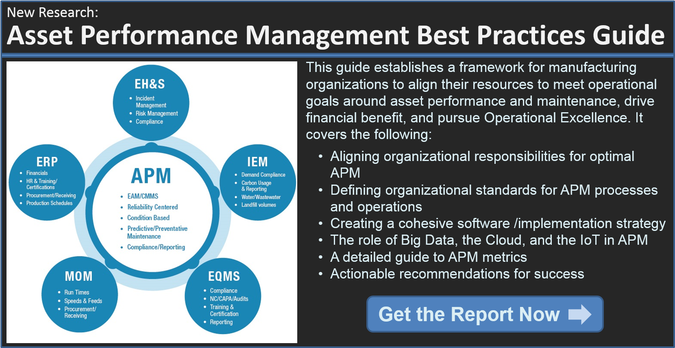Calibration of the tools and equipment used to perform certain measurements during manufacturing generally has been part of the lab, quality management or sometimes, maintenance departments. Ownership of the software to manage the calibration has typically been the domain of whatever department performed the calibration function. However, Operational Excellence demands a more holistic approach.
Just as calibration needs to be part of your quality processes, it absolutely needs to be part of your asset performance management (APM) strategy as well. And, regardless of who owns the software, it needs to be considered in your APM architecture.
Calibration Drivers Vary by Industry
In many industries governmental regulations require some degree of precision measurement of product and process parameters. Some are related to consumer protection such as ensuring advertised quantities are delivered while others may be related to product safety to ensure proper temperatures were achieved during manufacturing to avoid bacterial contamination. Another safety example might be weight control to avoid over or under dosing of pharmaceuticals. Product safety issues are also present in the automotive industry such as ensuring proper torques are applied when fastening components or coating thicknesses be sufficient to prevent corrosion.
In these types of environments there is often the requirement that the level of precision of the calibration be traceable to standards maintained by The Bureau of Weights and Measures which is operated by the National Institute of Standards and Technology (NIST). In other cases the requirement may simply be compliance with customer product specifications to a level of accuracy acceptable to the customer. They may be concerned as much with minimal variation as they are with the absolute measurements themselves, particularly if the product specifications have some degree of tolerance.
Calibration Drivers can Influence Which Department Owns the Function
Where calibration processes are owned is often driven by the industry a business is in. Where regulatory issues are paramount it is often Quality’s role to oversee calibration activity. This is very typical in the pharmaceutical and food and beverage industries, as well as many consumer packaged goods (CPG) companies. In discrete manufacturing like aerospace and defense (A&D) it may still be part of the Quality department but it is just as likely to be part of the maintenance department, particularly if the measure devices are part of the manufacturing assets used in-line on the plant floor. Where calibration is just driven by customer satisfaction operations may share the responsibilities with the Quality department or maintenance. In asset-intensive, heavy process industries, the maintenance department usually takes the lead in calibration management.
Who owns the calibration responsibility typically drives who owns the software used to assist with managing the calibration processes. In the past, as is typical with most application areas, standalone, highly specialized calibration management software was the only option. But, just as accounting and a host of other manufacturing front office functions morphed into enterprise resource planning (ERP) systems, calibration functionality is now embedded as standard or modularized functionality in quality applications, APM applications and even ERP software. Some manufacturing operations management (MOM) applications even include calibration elements.
Regardless of Ownership, Everyone Needs Access to Calibration Data, Especially APM
To achieve Operational Excellence manufacturers must be doing the right things, at the right time in the right way. This reflects the LNS Research position that, to achieve Operational Excellence you have to consider the elements of people, processes and technology together. Our founder, Matt Littlefield often blogs about this, as does Rob Harrison, our Quality practice lead. Calibration management is no exception. So regardless of which group owns calibration management and what type of application they use to manage it (standalone, quality, maintenance or even ERP), the fact remains there must be a high degree of integration with all of these applications areas. Since APM is the practice of ensuring Operational Excellence in the care and operation of the physical (including software) assets used to deliver a companies goods or services it is clear calibration management is a critical part of asset history and current condition. This is why we hold the position that you can't achieve APM excellence without including calibration management as part of your APM architecture.
